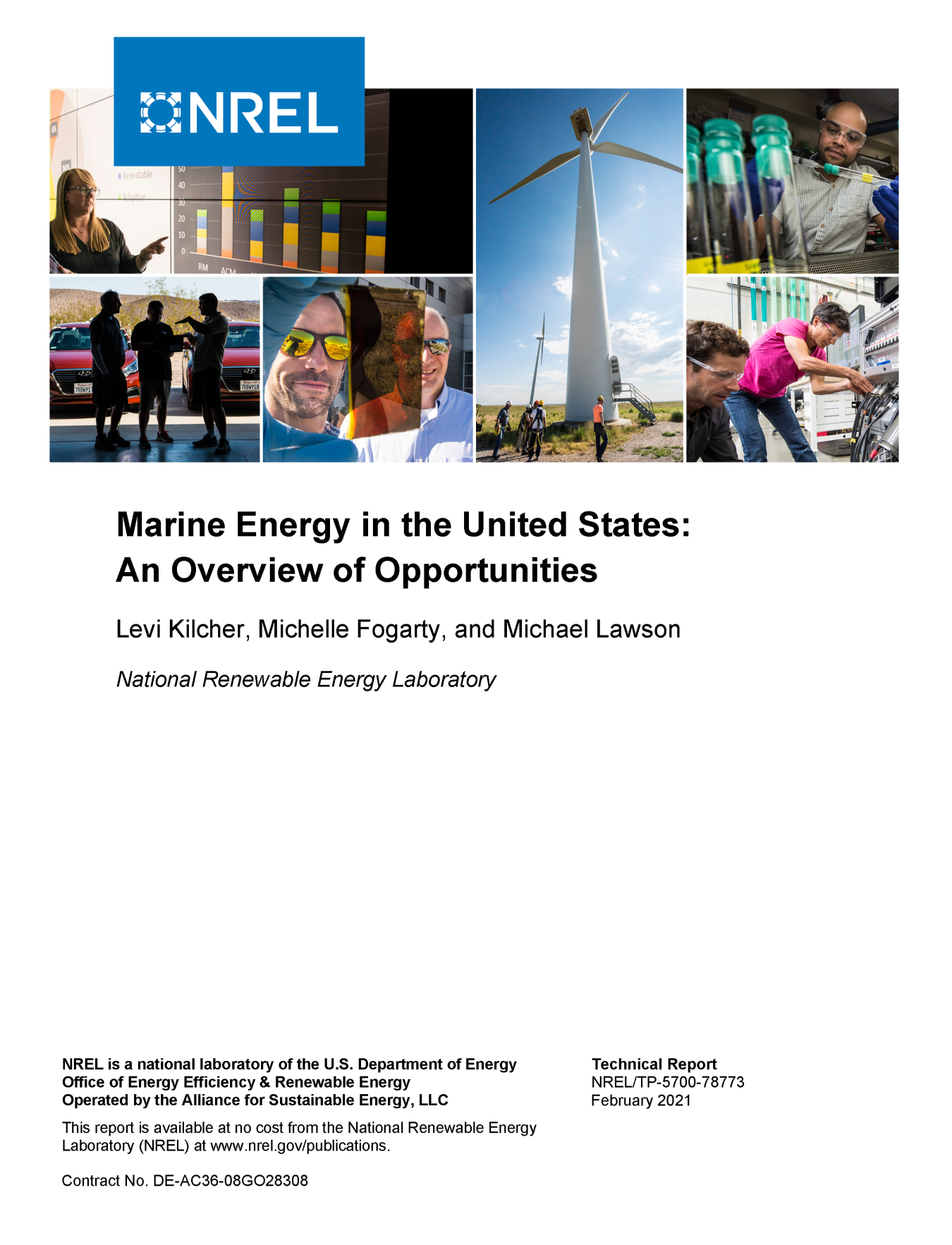Report summarizing the best available data on U.S. marine energy resources at the national, state, and regional scales.
Water Power Technologies Office
February 10, 2021This report summarizes the best available data on U.S. marine energy resources at the national, state, and regional scales. Results are primarily based on U.S. Department of Energy (DOE)-funded marine energy resource assessments for wave, tidal currents, ocean currents, ocean thermal gradients, and river currents.
Key Messages:
- The nation’s marine energy resources are large and geographically diverse.
- Early research indicates that these resources are more predictable than other renewable energy resources, which may be valuable to future energy markets as variable renewables play an increasing role in the nation’s energy mix.
- This report focuses on the technical resource within the nation’s exclusive economic zone that can be harnessed for large-scale (megawatt- to gigawatt-scale) energy generation.
- The total marine energy resource in the 50 states is 2,300 TWh/yr—equivalent to approximately 57% of 2019 U.S. generation.
- The nation’s Pacific and Caribbean territories and freely associated states add an additional 4,100 TWh/yr of ocean thermal energy conversion (OTEC) resource.
- As the demand for renewable energy technologies continues to grow, marine energy resources have the potential to contribute meaningfully to the U.S. and world energy supply.
Download the full report:


